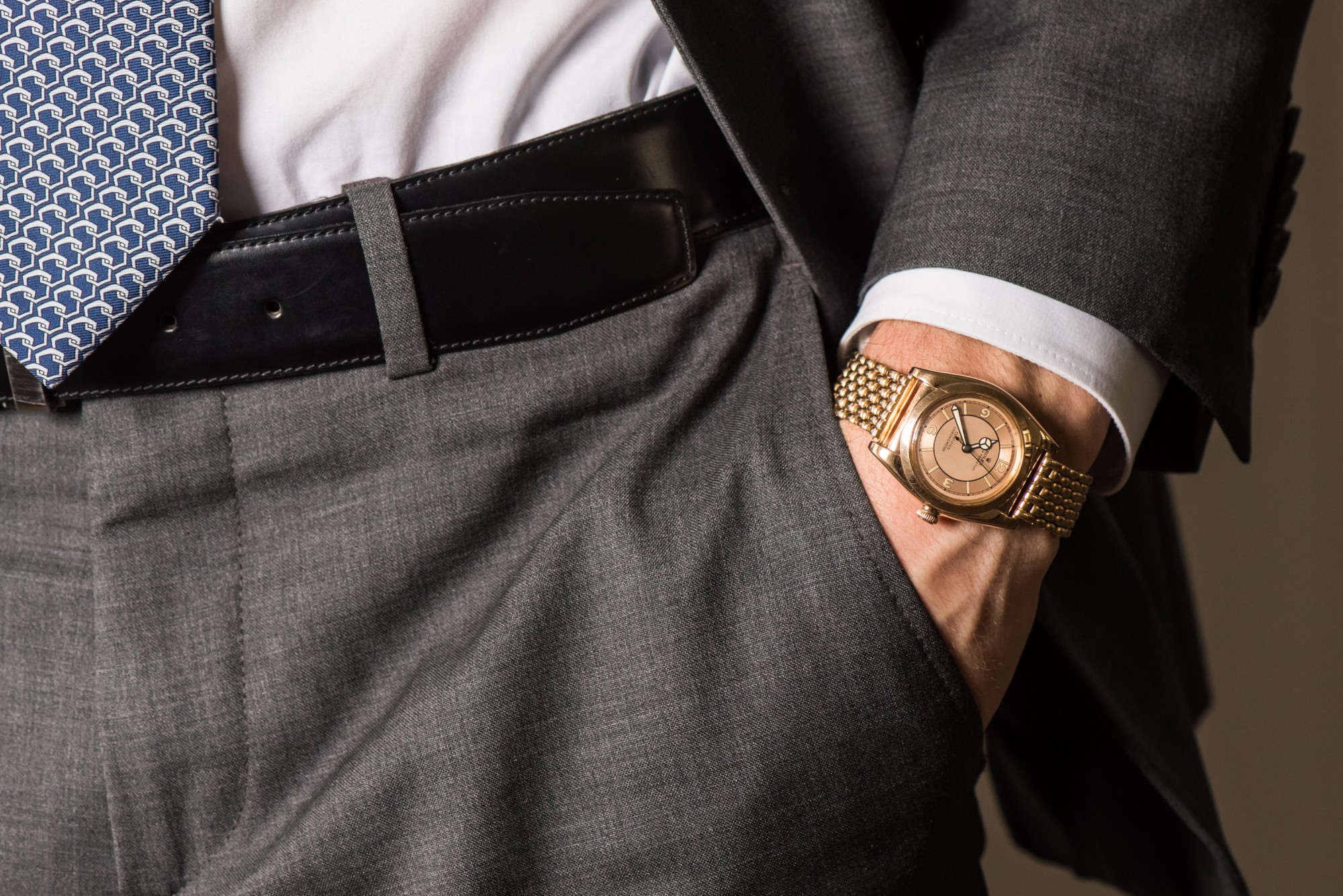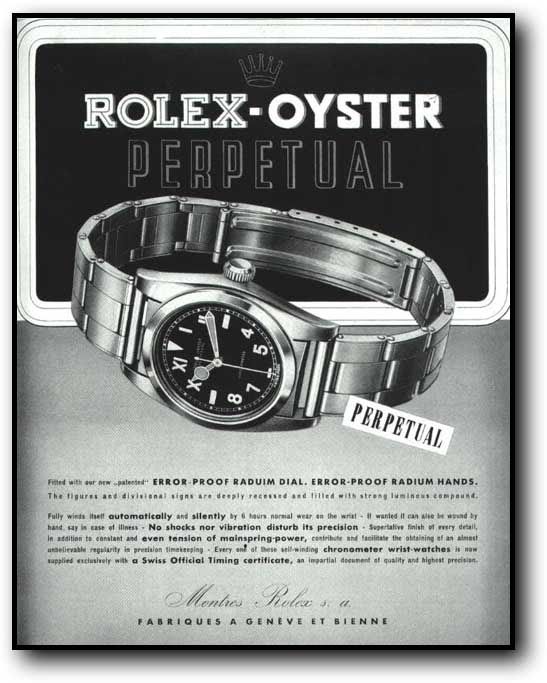
Top 14 Facts About Rolex Bubbleback – Interesting Things to Know
Today, the Rolex Bubbleback is not one of Rolex’s most iconic or well-known models. The reason for this is that the Bubbleback has not been in production for many decades and remains unknown to many new watch enthusiasts and Rolex fans. However, it is in fact, one of Rolex’s most historically important models.
The reason for this is that the Bubbleback laid the foundation for many other Rolex models and it established some of the most iconic elements of Rolex watches including their water-resistant cases and automatic perpetual movements.
The Bubbleback was extremely popular amongst collectors during the 1980s and 1990s, in particular on the Japanese market but the popularity of these models eventually decreased due to a number of different reasons. But whilst the Bubbleback Rolex watches have, by a lot of people, been forgotten and overshadowed by models like the Daytona, Submariner, and the GMT-Master, it’s still one of the most important Rolex models from a historical standpoint.
In this article, we are highlighting the Rolex Bubbleback and are listing some of the most important and interesting facts about the Rolex Bubbleback.
Facts about the Rolex Bubbleback
1. The Rolex Bubbleback was the first waterproof self-winding watch
The Rolex Bubbleback was the first waterproof self-winding watch in the world. However, it was not the first self-winding watch. The Bubbleback became the first automatic Rolex watch to have water resistance. Rolex created the Oyster in 1926 but this watch was equipped with a hand-wound movement. In 1931, Rolex patented the Perpetual rotor which Rolex added to the Oyster, leading to the creation of the Bubbleback.
2. The Rolex Oyster Perpetual Bubbleback was launched by Rolex in 1933
Rolex created the Oyster case in 1926 and when the Perpetual rotor was invented in 1931, they added it to the Oyster. In 1933, Rolex launched the Bubbleback.
3. The Bubbleback Rolex was in production for almost decades
The Rolex Bubbleback was launched in 1933 and was discontinued when the first Explorer prototype was launched in 1952 which took the Bubbleback’s place.
4. The reason for the protruding case back was to give room for the rotor
The birth of the Bubbleback was due to Rolex’s invention of the Perpetual Rotor. But rather than building a brand new watch from the ground up, Rolex uses an already existing design as the starting point – the Oyster. But because the rotor made the movement thicker, they needed to adjust the thickness of the watch to make room for the rotor. Rolex did so by adding a protruding case back, thus giving birth to the Nickname “Bubbleback” due to the way the case back is designed.

5. In the 1980s and 1990s a well-preserved Bubbleback sold for much more than a steel Daytona
It may come as a surprise to a lot of people that Rolex Bubblebacks were more hyped and more sought-after than all of the other Rolex professional models. If you look at the current watch market, that is rather unthinkable but it is true!
During the 1980s and the 1990s, the Bubblebacks were extremely sought-after by collectors, in fact even more so than the professional Rolex models. If you consider the historical importance of these watches, it’s not very surprising. But due to their reduced popularity today, it just goes to show that trends and people’s preferences change over time.
In the 2000s, the Bubbleback collector’s market crashed, partially due to the global economic situation at the time. And the Bubblebacks never really recovered from that blow.
In May and November 2000, Christie’s sold five examples of the Rolex Oyster Professional Reference 3065 with an average price of $16,000. In recent years, with data from 23 recent auction sales of the Bubbleback design in various references, Bubblebacks had an average price of $5,139. This just goes to show the great contrast in market trends and how the market’s preference for various watches can change a lot. On the same token, the popularity of Rolex’s professional models has soared.
6. The Bubbleback is one of the earliest models from the Oyster Perpetual collection
The Bubbleback is part of the Rolex Oyster collection. But the addition of the Perpetual rotor naturally made it an “Oyster Perpetual”. And the Rolex Bubbleback is one of the earliest models of this collection and ultimately the predecessor to the Oyster Perpetual model that we know today.
7. The Rolex Bubbleback was manufactured in many different metals
The Rolex Bubbleback was not only manufactured in stainless steel during its production years. As a matter of fact, the Rolex Bubbleback was manufactured in a wide array of different metals including either yellow or rose gold in 9k, 14k, or 18k. Moreover, Rolex made them either in solid gold or two-tone (bi-metal).

8. The first Bubbleback model was reference 1858
The first Rolex Bubbleback model was the reference 1858. This model was powered by the caliber 520. The automatic movements that Rolex used for the Bubblebacks were based on the Aegler movement in Hunter watches.
9. The early Bubblebacks were made with a three-piece case which changed to a two-piece case
Originally, the Rolex Bubbleback watches were manufactured with a three-piece case design. But in 1936, Rolex introduced a new case design that had a two-piece construction. This new case construction was introduced with the launch of references 3131 and 3132.
10. The Bubbleback was made with a large number of different dial configurations
Considering the relatively long production period of the Bubbleback, Rolex created many different versions and variants over the years. This includes both variants in regards to the metal, but also the dial and hands.
Over the years, Rolex created a vast selection of different dial and hands-designs. One of the most well-known and sought-after is the California dial. The large selection of dials makes the Bubbleback particularly interesting for some collectors as it means they need to go on a hunt for specific dial versions. After all, when it comes to watch collecting, the hunt is a big part of the thrill. Plus, the many dials mean that there is a whole world to explore and discover. And the more you dig, the more you’ll discover small details and differences in the dials as well.
Moreover, Rolex used several different handsets for the Bubblebacks over the course of the production. This includes Alpha hands, the iconic Mercedes hands, and others.
In fact, there are even more differences if you factor in different bezel designs as well. The bottom line is that the world of Bubbleback watches is vast and there is a lot for a collector to explore and discover.
11. Rolex never officially called the Bubbleback “Bubbleback”
Like many other Rolex terms, Rolex did not invent the term Bubbleback. Instead, the name Bubbleback was born as a nickname amongst collectors due to the way the protruding case back was designed. And like many other nicknames, Rolex never adopted the nickname.
12. Rolex created a ladies version of the Bubbleback in 1941
Initially, the Bubbleback was only available in one size. But in 1941, Rolex presented a ladies’ version of the Bubbleback, powered by the 420 movement.
13. The Bubbleback was made in three sizes
Over the course of its production, the Bubbleback was available in three different sizes. First, we have the standard size, then we have the ladies’ size, and lastly came the “Bib Bubbleback”.
This brings us to the 14th and last fact.
14. The launch of the Big Bubbleback led to the development of the Datejust
The last of the Bubbleback watches was the so-called “Big Bubbleback” which was made in a larger size than all of the others.
The Big Bubbleback essentially lead to the development of the Datejust as a date display was added to the design in 1945. This goes to show how the Bubbleback laid the foundation for multiple Rolex models to come – including the Datejust which is one of the most iconic and recognized timepieces in the world.
Cover photo courtesy of Sothebys.com.




